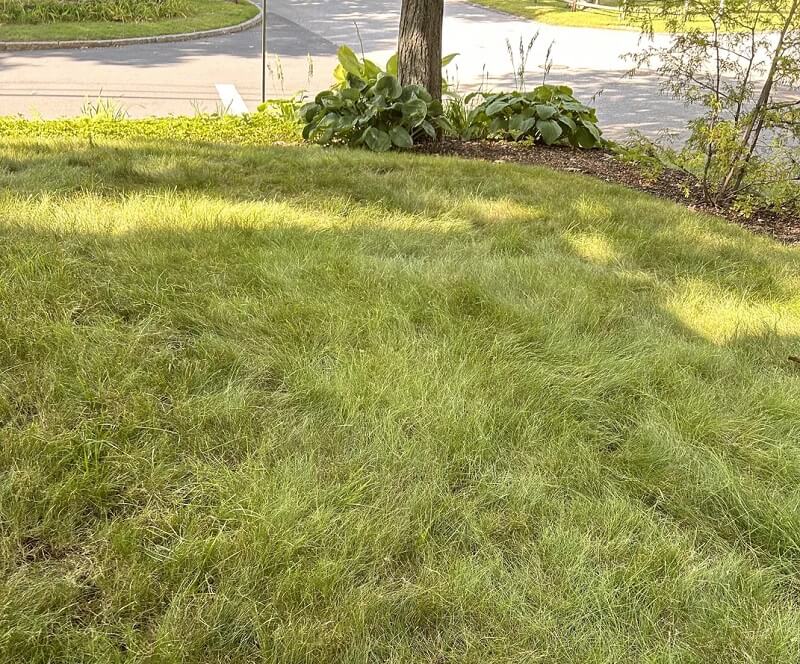A homeowner shared a photo of their low-maintenance grass and was stunned by how good it looked. They asked the Reddit community for help in maintaining it.
Other Redditors were also impressed with the grass and had suggestions to keep it in good shape.

The original poster shared a photo of their long, lush green lawn in the r/NoLawns subreddit.
The OP said: "This was sorta accidental. What can I do to make sure it stays like this?"
The grass is a creeping red fescue, and the homeowner hasn't mowed it or used weed killer or fertilizer.
According to Gardening Know How, creeping red fescue is a lesser-known grass that is gaining popularity. It's native to Europe and can grow in New York, West Virginia, Ohio, and Pennsylvania.
The Redditor's lawn looks so nice because this grass has an emerald green color and very fine blades.
Native lawns can greatly benefit you because they can save you money and time.
According to New York State's Department of Environmental Conservation, native lawns require less water since they don't need much water beyond rain once they are established. They also require less maintenance, so you don't have to mow your lawn as much or use fertilizer to keep it looking good.
On top of all that, native lawns have their own built-in pest control, so there is no need to put down poisonous pesticides that can kill beneficial insects.
Even eco-friendly pesticides can be harmful to beneficial creatures like pollinators. One gardener discovered firsthand that a particular eco-friendly pesticide was toxic to bees.
The European Environment Agency says pesticides can make ecosystems less diverse and are even highly effective in lower doses.
According to a study about biodiversity loss in The Lancet: "Loss of biodiversity undermines ecosystems' abilities to function effectively and efficiently and thus undermines nature's ability to support a healthy environment."
If you're concerned, you can upgrade to a natural lawn. You can worry less about the adverse side effects of pesticides. You can also save $100 per year on fertilizer and pesticides and $225 per year on water.
Fellow gardeners had plenty to say in the comments about the native lawn.
One had advice for keeping it looking good: "Just continue to patrol it every few weeks and pull any rogue grasses or weeds."
Another admired it: "That's pretty! It looks soft, like it would move nicely in wind."
Join our free newsletter for easy tips to save more and waste less, and don't miss this cool list of easy ways to help yourself while helping the planet.









